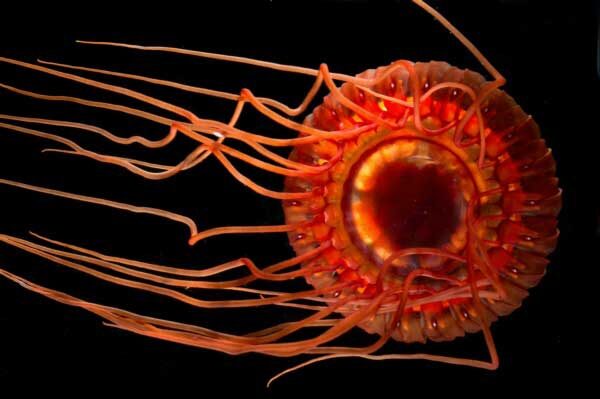By Chris Dorsett, Ocean Conservancy
There’s no such thing as out of sight, out of mind when it comes to our ocean. As we celebrate the role that our ocean plays in keeping us healthy, new research about the ocean twilight zone, the ocean area where light begins to disappear, is showing us just how important this hidden world is to our planet. We’ve learned that to protect ourselves, we need to protect this mysterious deep-sea area that regulates our climate and powers important ocean businesses.

The ocean twilight zone, or mesopelagic zone, is the area of the ocean 600 to 3,200 feet below the surface. It’s where light begins to disappear, but it’s home to some of the most amazing creatures we’ve seen. From glowing bioluminescent jellyfish to billions of tiny krill, some studies have estimated that the ocean twilight zone contains more than 90% of all life in the ocean.
The incredible diversity of life is an all-you-can-eat buffet for some of our most valuable and important commercial and recreational fisheries species. Florida is the sportfishing capital of the world and iconic and sought-after species like tuna, sailfish and swordfish dive deep to live off of the varied life in the ocean twilight zone. These fish and others are also vital commercial species that end up in some of the most refined restaurants on earth and highly sought after by recreational anglers.
The creatures of the ocean twilight zone are amazing survivors in their own right, but they’re also vital to our survival. Every day, upwards of a quadrillion (a million billion) of them migrate through the water column, returning to their deep-sea home with a collective 2-6 gigatons of carbon every year. This carbon is locked away in the deep sea, and is an important natural process for slowing climate change. These amazing deep-sea animals lock away more carbon than twice the amount of emissions produced by all cars on earth each year. Without them, climate change, and the devastating hurricanes and algal blooms would be much worse.
The ocean twilight zone is still poorly understood. But we understand that it would be a disaster to allow these creatures and habitats to be devastated by unchecked commercial exploitation. Already, there’s talk of deep-sea mining and fishing for these climate-regulating, life-giving animals. Though they are not appetizing for humans, industry is eying them as a source of food for pets and farmed fish.

Today, we celebrate World Ocean Day, and all of the amazing mysteries of our ocean. Tomorrow, I am headed to the U.N. Ocean Conference to work with my colleagues across the world to protect this amazing ecosystem and the animals that live in it. Ultimately, we hope to pass a resolution that protects the ocean twilight zone and the important roles it plays in a healthy ocean, communities and economies.
Protecting the ocean twilight zone will take a collective effort at a global scale. We need to make sure that everyone understands the vital importance that this hidden world has for every single person on the planet.
As more consequences of our changing climate surface, we need to look under the waves and protect the deep-sea engine that regulates our climate. These quadrillions of animals are working hard to survive in the dark ocean depths. With your support, we can protect them and our whole planet.
Chris Dorsett is Ocean Conservancy’s vice president of conservation. Banner photo: Mushroom soft coral on the Davidson Seamount at 1,470 meters depth (NOAA, Public domain, via Wikimedia Commons).
Sign up for The Invading Sea newsletter by visiting here. To support The Invading Sea, click here to make a donation. If you are interested in submitting an opinion piece to The Invading Sea, email Editor Nathan Crabbe at nc*****@*au.edu.



